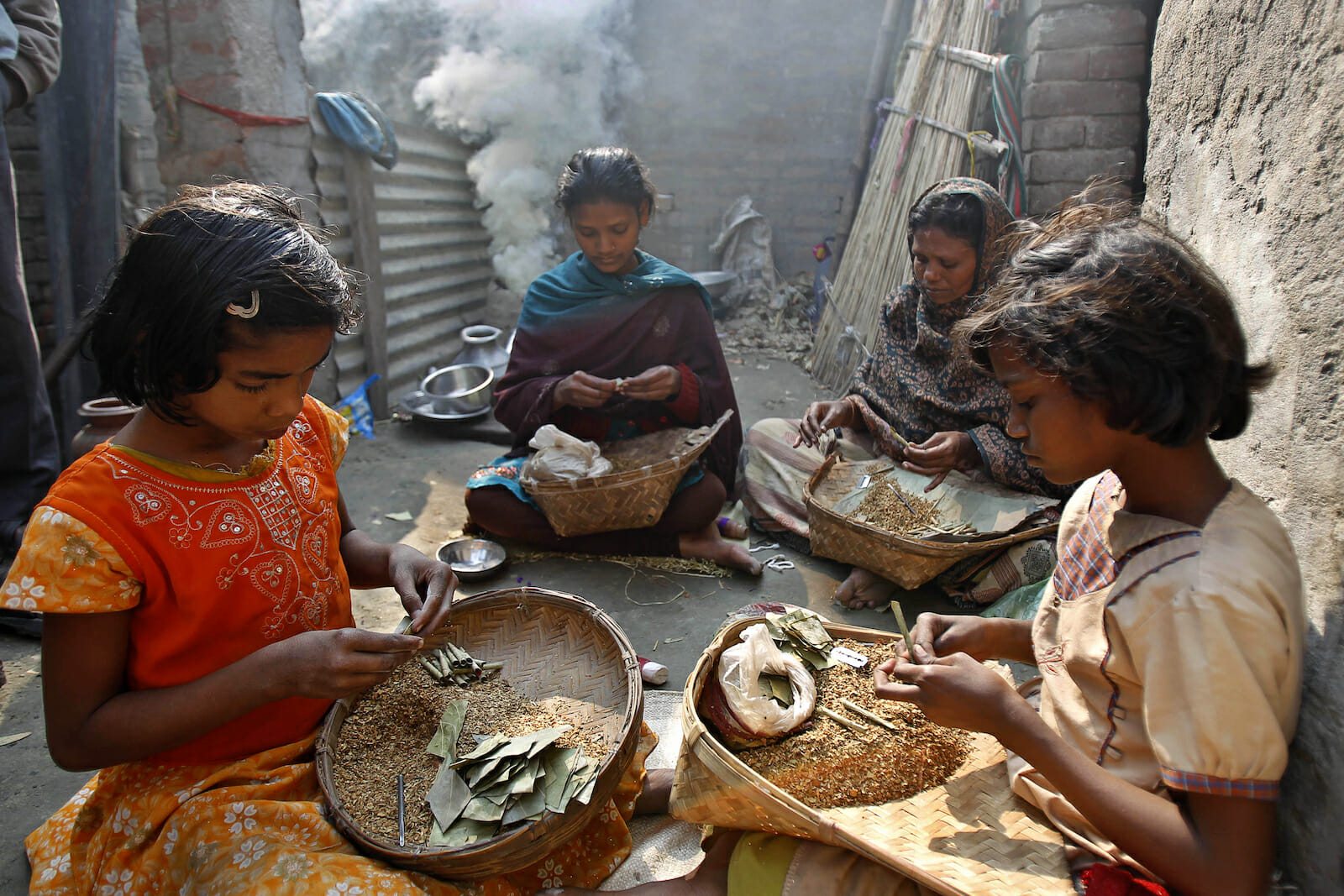
Neoliberalism and the Welfare State: The Case of Contemporary India
With the onset of neoliberalism, the principles that underpinned the careful creation of welfare states in the post-war period gradually started to disintegrate. Globalization is thought to have dealt a final blow to statism with market forces having to decide even matters that were earlier well within the realm of the state – i.e. social welfare.
With a strict eye on fiscal deficit, neoliberals propagated the idea of free markets with very limited state intervention. Consequently, generous state expenditure and neoliberalism are perceived as mutually exclusive. But the existence (and expansion) of the welfare state in India in this very era of neoliberal globalisation defies the established views on neoliberalism. India stands out as a noteworthy case of state intervention and redistribution at a time when governments around the world are hell-bent on curtailing state expenditure.
N.G. Jayal, writing at a time when India had already spent a few years since its supposed neoliberal turn under the aegis of Bretton Woods institutions, stops short of calling India a welfare state in its classical sense as “…rights have never been central to the philosophy of welfare that underpins the welfarist initiatives of the Indian state.” Almost two decades later, when it is a constitutionally and legally enforceable right of Indian citizens to demand (a) education, (b) employment and (c) food, India in its present day, while it has certainly departed from its socialist affiliations, is interventionist, developmentalist, and welfarist.
Welfare in India today
India is fairly integrated into the global economy. Trade as a percentage of GDP stood at 25% in 2011 and it is one of the sought after FDI destinations. But even as the country has opened up its borders for free the movement of goods and capital, the state puts welfare on top of its agenda while not neglecting wealth creation, meaning that the Smithian idea that free-trade by itself will eventually bring about human wellbeing is rejected.
In their book, India: Development and Participation, Amartya Sen and Jean Drèze persuasively argue that the deployment of free markets “…can potentially be combined with greater sharing of economic opportunities among the labour force.” This, the authors conclude, calls for initiatives that lead to broad-based economic participation such as employment programmes, educational expansion, healthcare, micro-credit facilities, etc.
While neoliberal globalisation in itself places unwarranted focus on accumulation of wealth at the expense of distribution, the state can act as a buffer against global economic pressures. S. Lakha and P. Taneja write that the Indian state’s reaction to external pressures “…attests to the strength of the country’s democratic institutions.” They point out that while it is evident that “…globalisation has contributed to increased social and economic polarisation in India it has not completely constrained the autonomy of the state to adopt counter-measures … to deal with abject poverty and growing income inequality.”
The deep-rooted social institution which we know of as the ‘state’ therefore hasn’t undergone any threat in India while its welfare role has only been expanded in recent times. Financing universal education is part of that expansion.
Education, a social good
India accounts for 37% of global illiteracy and school enrolment is still abysmally low for a country aspiring to be a global power. It has a long way to go indeed. But although insufficient, the Indian state has nonetheless stood against the neoliberal tide of commercialised education by not leaving education to market forces alone. While excessive privatization of education is a global phenomenon, there is a parallel movement towards ‘decommodification’ in India. The Right to Education Act (RTE), which guarantees free elementary education to all children between the ages of 6 and 14 is a case in point. But this should not be seen in isolation, as the RTE comprises only a part of the role that the Indian state plays in education imparted to its people.
Education is widely recognised as a potent tool for the “socio-economic mobility” of the vulnerable sections of the economy. While India is one of the few countries that officially counts education as a fundamental right, its state-sponsored educational expansion is not limited to schooling. Since independence, university education has been effectively fully subsidized by the state. J.B.G Tilak reminds us that “essentially due to public subsidisation of higher education, today higher education in India is no more elitist; it is somewhat democratised with a large proportion of socio-economic weaker sections participating in higher education.”
The RTE itself has come in for criticisms and its implementation has been patchy. But on its own, it is a massive distribution by the state targeted at the poorer sections of the economy. It’s not just the RTE. The concept of ‘mid-day meal,’ where poor children are provided meals in school have proven to be popular and somewhat successful. But with much of the world’s malnourished belonging to India and 43.5% of Indian children less than five years old underweight, there is little to celebrate. However, thanks to new landmark legislation, food is now a constitutional right in India.
Towards decommodifying food
The Food Security Bill (FSB) will take up the mammoth task of providing foodgrains at a fraction of market prices to 75% of the rural population and 50% of the urban population. Effectively, the state now guarantees a ‘legal right to food.’
Back in 1981, Amartya Sen had famously argued in Poverty and Famines: An Essay on Entitlement and Deprivation that starvation was a function of entitlement, commandingly debunking the Malthusian explanation of hunger in terms of shortage. Sen’s moot point was that hunger has less to do with the availability of food than poor people’s rights and access to it. The Indian state’s massive outlay for ensuring food security in the country is a step in the right direction and is a starting point in addressing the issue of lack of entitlement. The bill in itself has come in for both criticisms and praise and the fine points of the legislation can be the subject of a separate piece. But as Swati Narayan writing in The Guardian claims, “…despite its flaws, the bill is one more weapon to be wielded in India’s war on hunger.”
In any case, distributing virtually free foodgrains to a population that is effectively the population of 15 UKs combined, by a government that is already under fire from right-wing deficit hawks is a by no means a sign of a shrinking state. The tenets of the bill reflect a move towards de-commodifying food at a time when something as basic to human reproduction as food is undergoing gross financialisation globally.
The FSB will be a reform of the existing Public Distribution System (PDS) which involves government procurement at a Minimum Support Price (MSP) from farmers and supply of foodgrains to the poor at heavily subsidised rates. FSB will cost the Indian state roughly $25 bn every year although estimates vary.
Securing labour rights – The NREGS
The National Rural Employment Guarantee Scheme (NREGS) is revolutionary in many ways. It gives citizens the legal right to employment and is a practical manifestation of the otherwise failed state promise to provide means of employment to everyone. In General Theory of Employment, Interest and Money Keynes challenged the neo-classical assumptions that market forces could provide for full employment and pronounced as necessary state intervention, which liberals of the Hayekian ilk considered a distortion of the market.
Keynes during the mid-twenties urged government expenditure on public works to provide employment and to beat depressions. The Indian NREGS can thus be construed as rural Keynesianism as it involves state expenditure on public works like irrigation works, digging borewells, construction of embankments, etc while providing employment.
The NREGS involves guaranteeing employment for a minimum of hundred days at a statutory minimum wage. Provisions of NREGS include unemployment allowance if the stated promise of 100-day employment is unmet. In India’s rural hinterlands where gender equality is a pretty alien concept, NREGS-wages paid to men and women are equal. NREGS is also phenomenal in stemming distress migration to urban centers by making the rural economy attractive. The NREGS also potentially absorbs the ‘rural surplus labour’ and by way of providing liquidity boosts the rural economy.
The author of a recent paper on the subject makes the point that the NREGS manages to address structural inequalities and marginalization. Besides empowering people and helping ensure that the economic and democratic rights of labour are upheld, the NREGS can potentially end up with better collective bargaining power of labour.
While neoliberalism manifests itself fiercely and causes social polarization, the existing structure allows for astute state intervention and welfarism to mitigate inequalities. Although far from ideal, India is an example of the kind of supportive role that the state needs to play in order to create inclusive growth and provide welfare. The RTEs, FSBs & NREGAs are just some of the kind of stuff that helps restore a bit of our faith in the state even as the onslaught of financialisation and neoliberalism continues.

